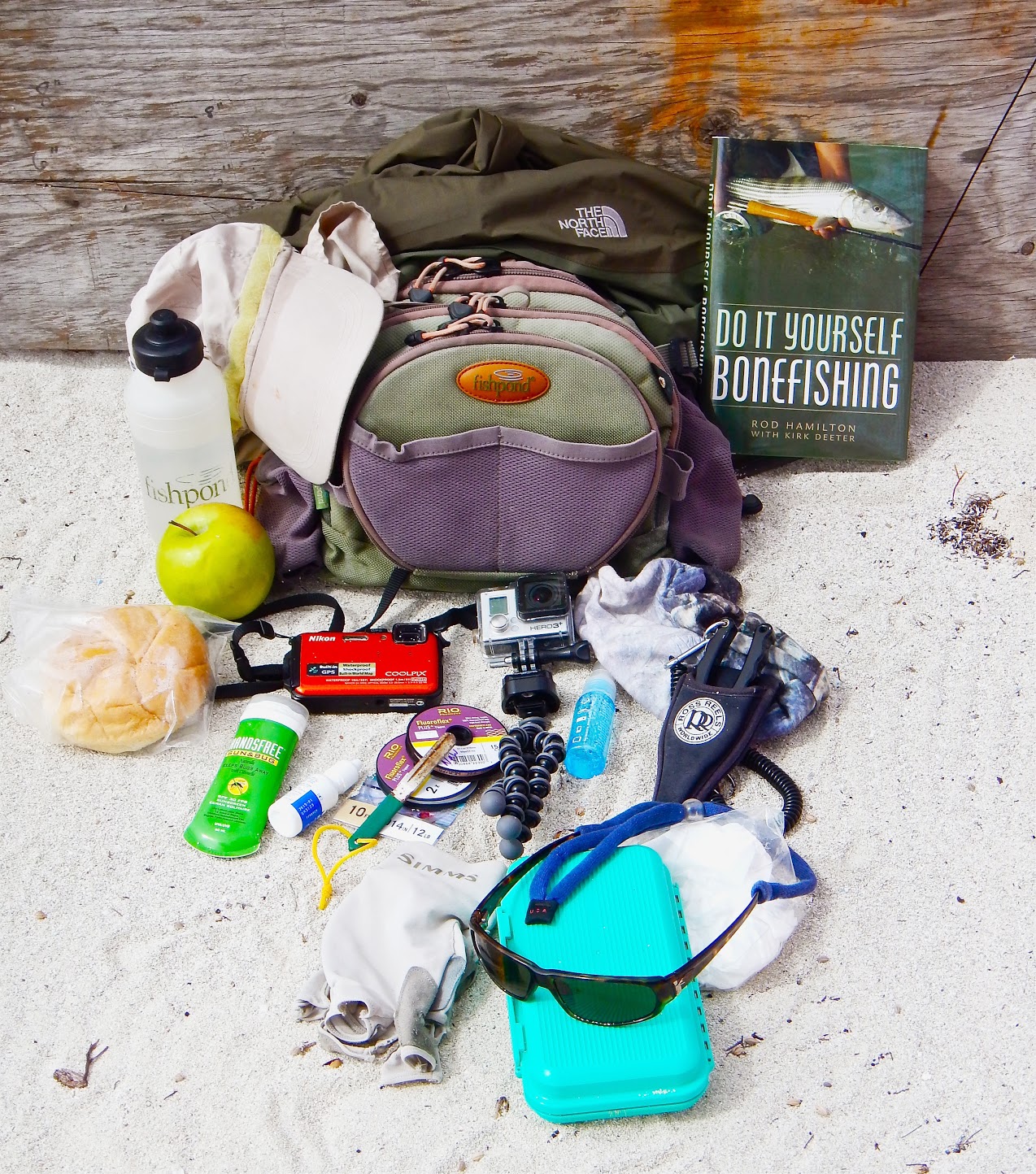DIY On Mangrove Cay
Preparation
Immersed in the British Columbia trout season, somehow it didn’t seem right to be tying bonefish flies in May. Yet there I was putting the finishing touches on some Veverka’s Mantis shrimps in preparation for my June 1 departure to Andros Island’s Mangrove Cay.
It was a phone call from Jerry Gibbs (Outdoor Life’s fishing editor for 30 years) inviting me to join him on a trip to the Bahamas that put this summer-time trip into motion. So the flights got booked, the gear got packed and I put away my trout rod for a few days.
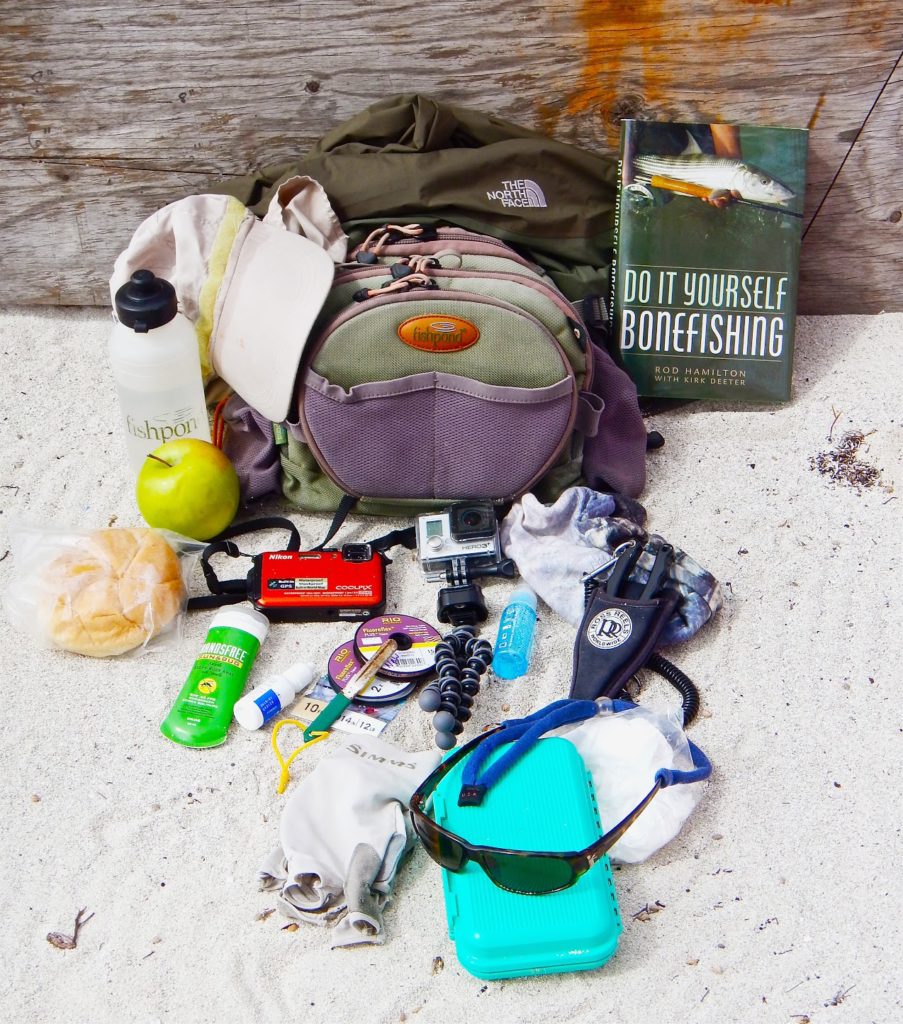
Landing
Landing at the Clarence A. Bain airport after a 15-minute flight from Nassau on LeAir, I quickly realized that Mangrove Cay – at 12 miles wide and six miles long – was going to be simple to explore. I rented a car for the week on this trip, but, as I discovered, you can get around just fine on a bicycle.
I decided on the Seascape Inn as my home base for the next seven days. The setup there can best be described as a cross between a Corona commercial and Gilligan’s Island. Positioned elegantly on a beautiful white sandy beach, the lodge overlooks a productive bonefish flat while offering the budget-conscious angler nice accommodations and quality meals.
After a good night’s sleep, Jerry and I were greeted with cloudy skies and a brisk onshore wind. A satisfying continental breakfast was waiting for us but before I could finish eating, the shakes set in. You know, that feeling you get when the adrenaline begins to amp up fueled with the knowledge that there are bonefish waiting for you. I have done this hundreds of times, but there is no denying the feeling of that first morning, when the air is ripe with anticipation and you can’t wait to see how the day will develop.
First Casts
Steps from the lodge we entered the knee-deep water and headed north toward the flat surrounding Swan’s Cay. It’s not large by Bahamian standards, but the flat is well protected by five small cays making it possible to still spot fish in the wind and low light conditions. We hadn’t been fishing for 15 minutes when I spotted a slight glimmer to my left, which turned out to be the fin tip of a very large bonefish. He was swimming away but in that happy way bonefish do. Not disturbed or hurried but attentive to the leggy critters that were going to be his breakfast.
Two false casts and I laid my #6 rubber-legged Gotcha three feet from the fish’s head, almost like I knew what I was doing. A gigantic smile formed on my face as the fish turned and inhaled the fly.
Big Fish On!!!! This was going to be a great trip.
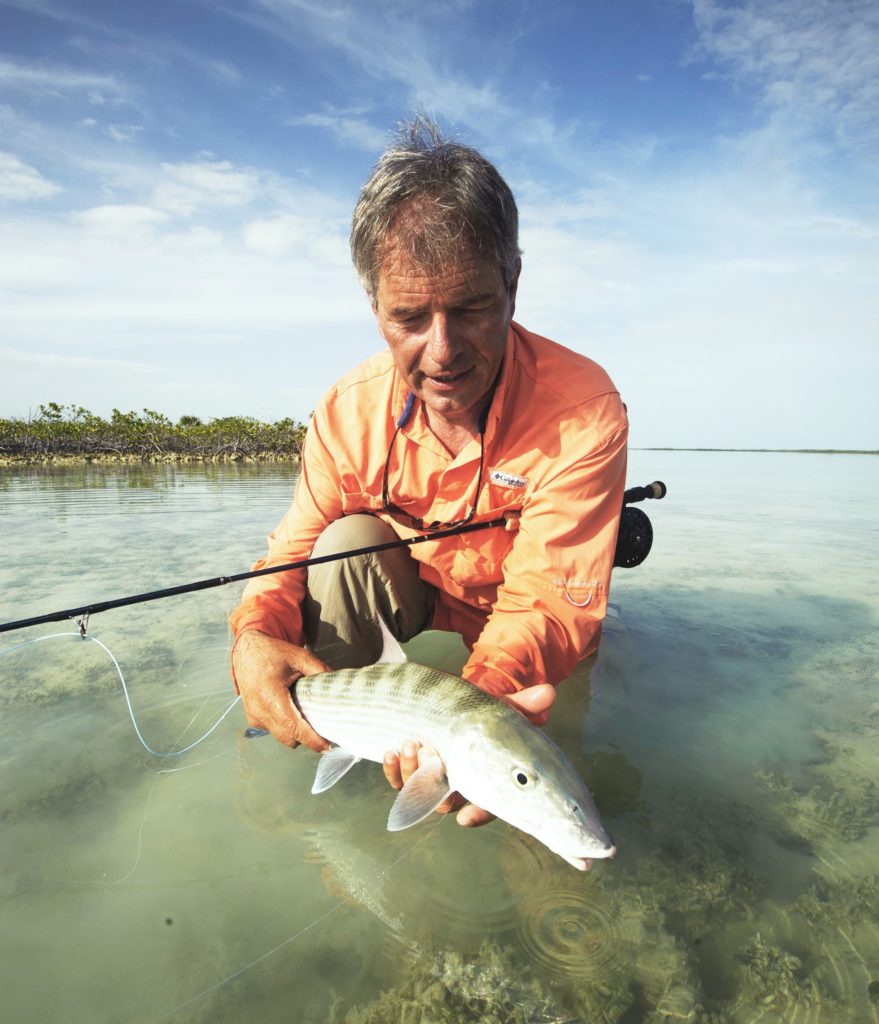
He took off on a powerful run as only eight-pound-plus fish can do. I was confident it had been a solid strip strike and all of my lines, leaders and hooks were brand new. Jerry was on the camera behind me capturing the action as the first fish of the trip panicked and struck out for deeper water. As is often the case with many “big fish” stories, this one had an unhappy ending when the line ripping through the water suddenly went limp. The leader, at its four foot mark, had nicked a rock, and it was cleanly severed at that point. There I was, with a dumbstruck look on my face, holding the proverbial tail without the donkey.
Andros, and the Mangrove Cay DIY Ethos
It turns out that that unbuttoned fish was the fishing gods’ “Gypsy,” holding up her crystal ball to show me how the trip would unfold. The first 15 minutes of action had sucked me in, enveloped me in a false sense of security, success and promise only to be dashed in the last 10 seconds. DIY is not for the faint of heart.
Located in the middle of Andros and sandwiched between the Middle and South Bights, Mangrove Cay is surrounded by some of the most famous bonefish waters on the planet. With a population of approximately 800 people, fishing and tourism are the main drivers of the economy. And “bonefish” is spoken everywhere and by everyone.
Though I often fish with guides, I was on Mangrove Cay specifically to sample the DIY opportunities. Never having visited before, my preparation began with on-line research, phone interviews and a couple of hours on Google Earth. By the time I left Vancouver, British Columbia, I felt prepared to explore the flats and shorelines available to the non-guided, walk and wade angler.
Not including the South Bight (which is reached by kayak) there are approximately 5.5 miles of wadeable shoreline on Mangrove Cay. Virtually the entire eastern shore and the adjoining flats can be accessed using either a car or bicycle. In addition there is a very large and productive flat on the southeast shore just north of the South Bight. Having identified the potential fishing areas, I developed a plan to walk as many of the flats as possible during my seven-day visit.
In order to make the most of my time on Mangrove Cay I divided the flats into four separate manageable areas. The first three can be reached by car or bicycle, while the fourth requires a kayak.
The first area comprises the 1.5-mile section from Swain’s Cay north to the point locally known as Burnt Rock. I found a few fish along the beach, but the best fishing was immediately adjacent to Swains Cay itself and the Burnt Rock flat. I would save the beach section for sunset walks after dinner.
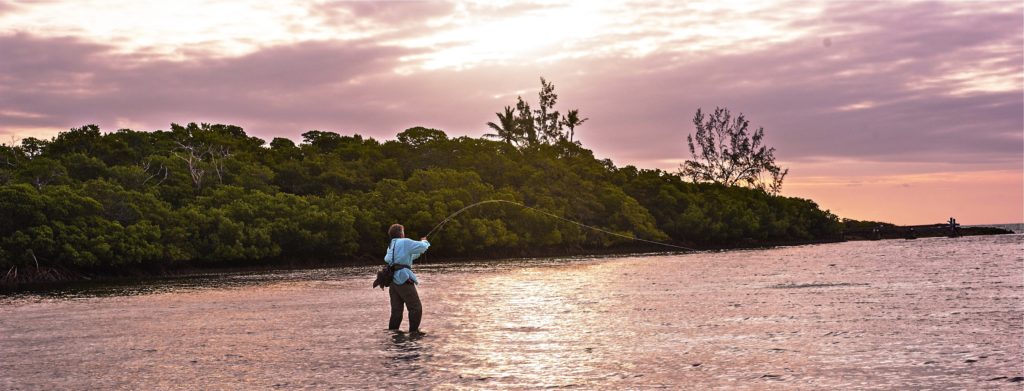
The next area is located south of Swain’s Cay and runs for 2.75 miles to the Blue Hole at Victoria Point. The best fishing on this stretch is closest to Swain’s Cay. Skip the .75 miles of beautiful sandy beach in front of the Seascape Inn and begin fishing where the mangroves touch the water at high tide, best reached by cycling to the old cement dock located across the road from the cell phone tower. Walk the 300 yards to the mangroves north of the cement dock then turn and begin fishing south from there covering the 1.5 miles to the Blue Hole and Victoria Point.
I preferred to fish the low to incoming tide on all of the flats but I did encounter a large school of fish hugging the shoreline while walking this particular section on a high tide. Tucked under the overhanging limbs of the mangroves (just north of the cement pier) were hundreds of fish. I ended up hooking seven and landing five from the school before they decided to leave. As with most schooling fish, they were eager to grab my Pop’s Bitters and were a nice diversion from the aggravating behavior of the large singles.
The third area is the largest and most productive of the flats. Located thirty yards from the road, the flat is reached by parking the car at a little pullout immediately past the Victoria Point/Lisbon Creek marker. The flat runs from Turtle Cove in a southwest direction for 1.2 miles, ending where the shoreline meets the mouth of South Bight. There are a number of cays located well off shore and at low tide it’s possible to wade to the cays. The fish have a set pattern here, exiting northeast to the deeper water as the tide recedes and filtering back onto the flat on the incoming tide. This is an extensive area and is more than suitable for two or three anglers to cover over the course of six hours. I fished it a number of times, experimenting with different stages of the tide, and had the most success during an incoming tide. But once the tide is full there were still fish to be found following the shoreline.
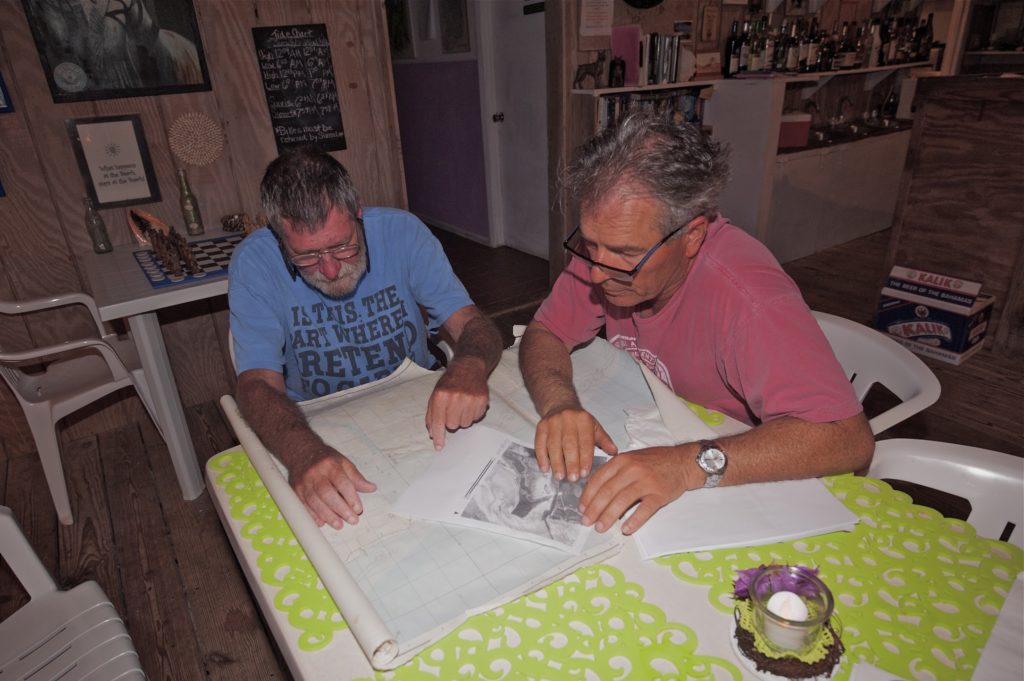
The best fishing for the DIY angler is found in the fourth area, the South Bight, which is only accessible by kayak. Launching the kayak at Lisbon Creek, there is an excellent flat 200 yards due south bordering the mouth of the Bight. The fish can be counted on to drift across this flat on each tide as they enter and leave the Bight on the rising and falling tides.
Once the water has begun to rise, leave the flat at the mouth of the Bight and paddle with the flow, heading west. You will be paddling your kayak in the same direction as the fish are swimming, so each time you beach, turn and walk east to meet the incoming fish. Then reverse this pattern as the tide recedes, ambushing the fish as they leave the Bight. The southern shoreline can be easily fished for three miles, with firm footing virtually everywhere you stop. The north shore requires a longer paddle but there are plenty of rewarding spots there as well.
A Few Lessons
Other than the fish in the South Bight, it’s clear that the fish within range of the DIY angler are well educated and have seen their fair share of conventional fly patterns. They aren’t as spooky as the heavily-fished bones of Abaco or Eleuthera, but they are not going to put up with sloppy casts, noisy wading, or standard flies. This environment calls for long leaders, small flies, and a stealthy approach. (Note that in the South Bight there is less pressure and the fish are more relaxed, and so are more willing to take a well-presented fly.)
With the exception of one guided day, Jerry and I fished the other flats on our own, testing each of the tides. I was skunked on two days but caught fish on the others, including my best DIY day when I landed six. I did hook two eight-pound plus fish (lost them both) so the reputation of big fish on Andros remains intact.
Overall, my assessment of Mangrove Cay’s fishing is that it remains a premier destination for fully-guided trips, and it’s ideal for a combination guide/DIY adventure. It also fits the bill for those who simply want a laid back tropical vacation with a few hours of bonefishing thrown in.
Gear and Ordnance
I arrived with my normal range of gear including an eight- and nine-weight rods, quality saltwater reels, and Rio Bonefish QuickShooter floating lines. The only slight modification I make for Andros is to make sure I have at least 200 yards of backing, since you are likely to run into some very large fish. For the guided days your tippet can easily be #16 – #20, since you are throwing at “friendly” fish. For the DIY days it’s necessary to drop down to #12 fluorocarbon and 14 foot leaders.
My DIY fly box held the usual 58 flies I take when wading. Most are in the #4 – #6 range and include rubber legged Charlies and Gotchas, Veverka’s Mantis shrimps, Orange Butt Rabbits, Pop’s Bitters, and Raghead crabs. Add six non-weighted flies with weed guards for tailing fish and you are good to go. On the guided days you will need to swap out most of the DIY flies replacing them with #2s and #4s. The guides tend to like flies bigger and with more flash and a large profile. Make sure you have some flies with lead barbell eyes to get down fast in the deeper pockets.
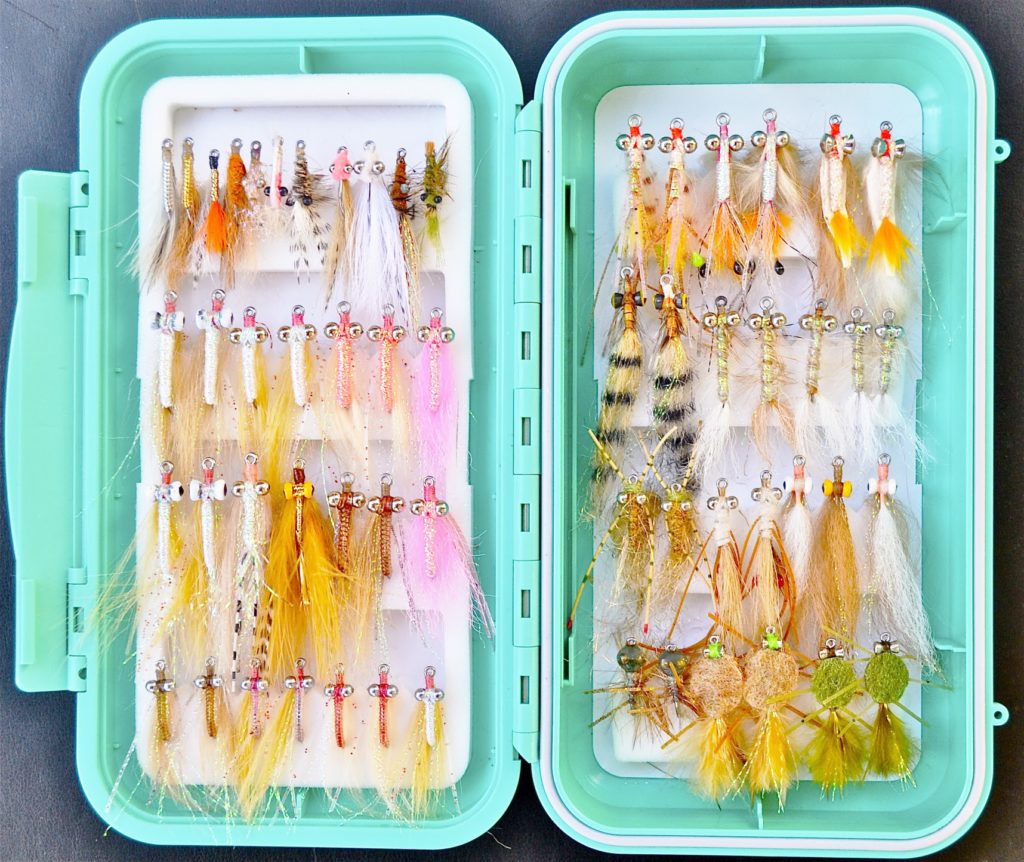
Where to Stay and Who to Fish With
There are a dozen quality, professional, independent guides on Mangrove Cay, all of whom have first class equipment. Jerry and I were lucky enough to spend a wonderful day on the South Bight with one of the best, Capt. Douglas Saunders. And if you want to hit the west side of the island, he can take you there.
The choices for accommodations are somewhat limited, with relatively few homes or apartments that can be rented. And since groceries are also difficult to obtain it is best to stay at one of the established lodges where your meals are included.
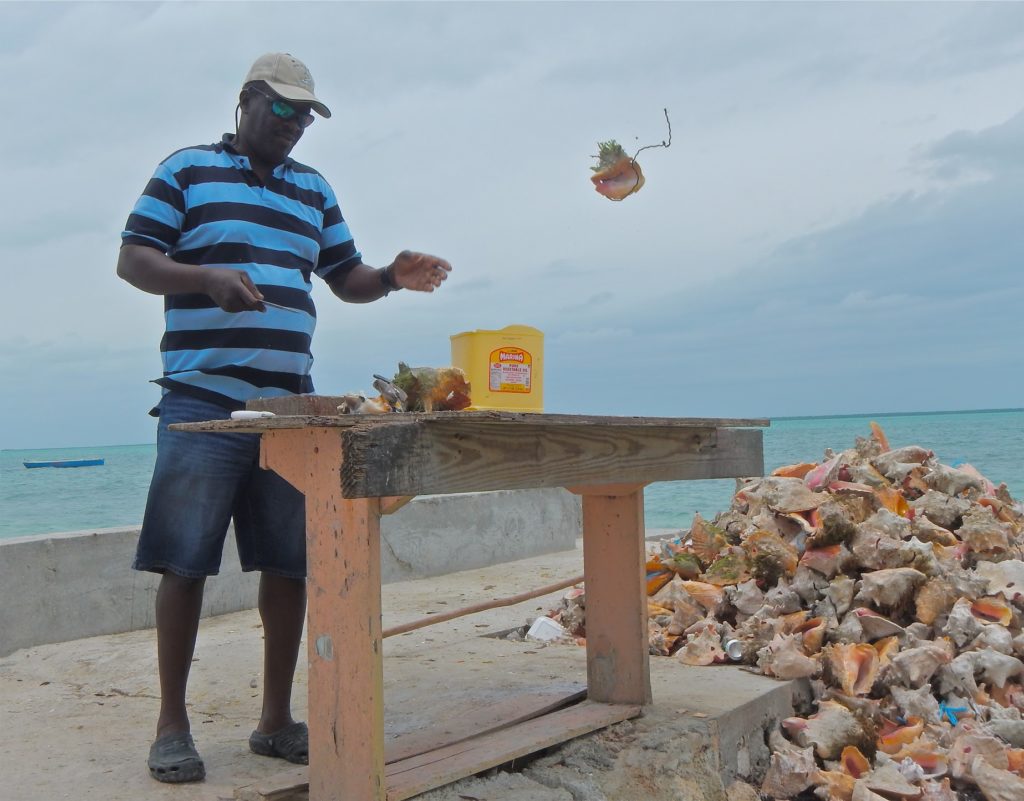
Ideally located on the northern tip of Mangrove Cay, The Mangrove Cay Club has immediate access to the North and Middle Bights. Beautiful accommodations and exquisite meals make this an ideal destination for those interested in a full service angling experience.
Swain’s Cay Lodge, located on the flats of Swain’s Cay, offers beautiful rooms and meals for the discriminating fisherman and non-fishing partner alike. Using several of the island’s best guides, there isn’t a better location in the Bahamas to headquarter for either a full week guided trip or a vacation combining fishing, relaxing and exploring.
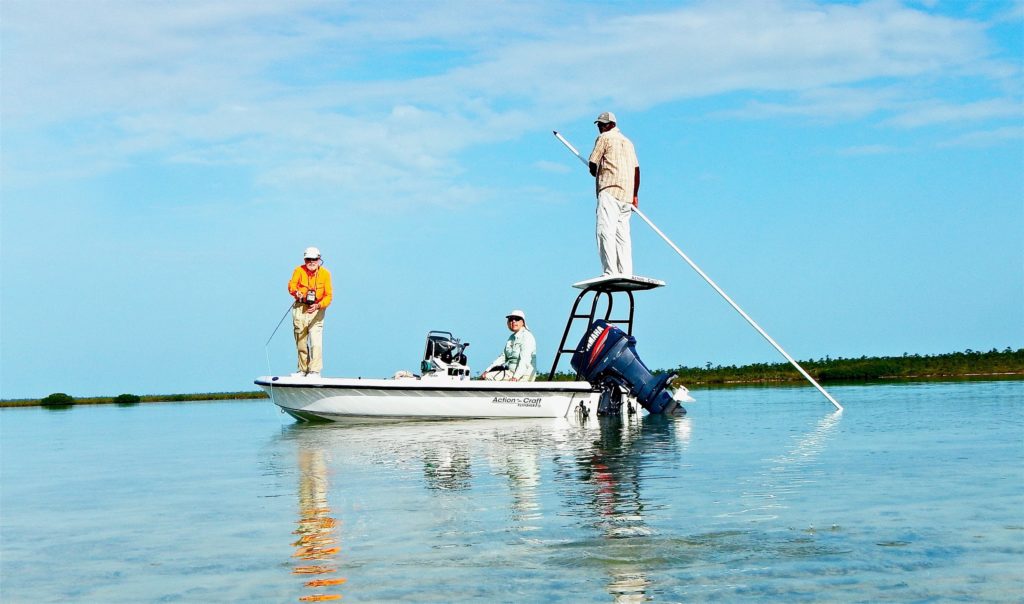
Located mid-way down the east coast of Mangrove Cay is the budget friendly Seascape Inn. Not billed as a fishing lodge, Mickey and Joan McGowan’s warm hospitality is a no-fail recipe for instant relaxation. Taking a swim off the beach or reading in the hammock will melt away any of the stress you arrived with. For those who want a chance at landing Mr. Bone, they can hook you up with great guides.
Now that I am back home tying #16 Parachute Adams, it is satisfying for me to reflect back on Mangrove Cay and how wonderful and diverse our fishing world is. Whether it’s casting to tailing bonefish as the sun dips below the horizon or presenting a mayfly imitation to a dimpling trout, we must count ourselves as blessed whenever the “wand” is in our hand.

